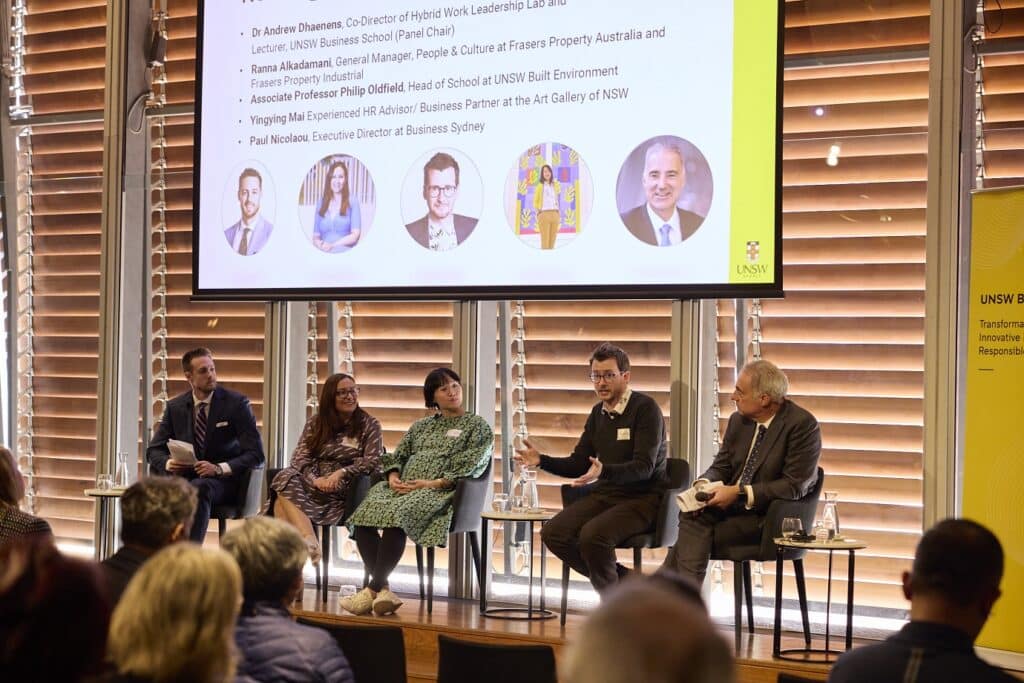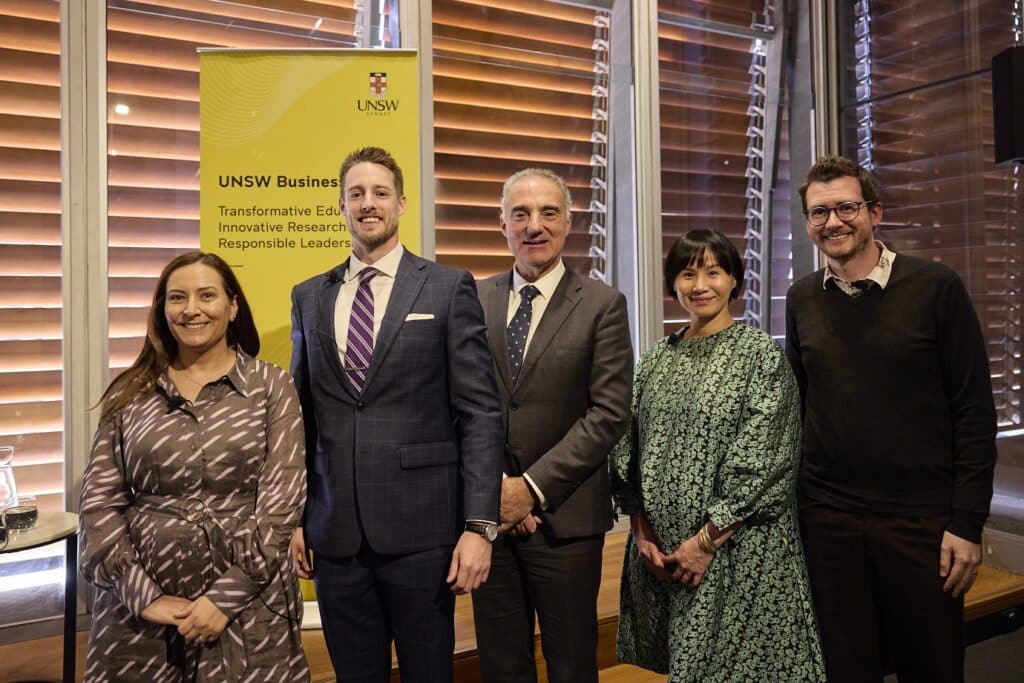While most people agree that hybrid work is here to stay, the conversation remains open as to what exactly that should look like.
Depending on a particular employee’s job requirements and personal life, an effective form of hybrid work may vary.
Speaking on a panel at UNSW’s ‘Redesigning Work for a Hybrid Workforce’ event, Frasers Property Australia’s General Manager People & Culture, Ranna Alkadamani says that for her company, the sweet spot for hybrid work seems to be 2 to 3 days of working in the office and the rest from home.
This is particularly useful for their female employees, who Alkadamani says tend to work for 2 days from the office and 3 from home, with factors like caregiving responsibilities impacting this decision.
“Gender equality is facilitated by flexible work,” she says, adding that if large corporations are serious about shifting the dial for women, then they need to think seriously about hybrid and flexible work.
Pointing out research that they’ve conducted, Alkadamani says they’ve found “the key drivers” in their workforce is that people really value working from home as it helps them balance their work and life. She adds that working from home a few days of the week allows for time saved in not having to commute as well as cost-savings from food and travel.
Despite these benefits of hybrid work, there are some who argue that workers need to return full-time to the office to be the most productive.
In response to this kind of logic, Alkadamani says, “You can turn up at work and be just as ineffective as you are at home,” noting that different job types require different types of flexibility.
“If you’ve signed up to be a GP or nurse, then you’ve signed up to show up,” she says, but adds that this doesn’t mean an office job– that could be done effectively from home– should be required to commute to the office full-time.
“Work is something we do and it’s important to manage outcomes- it’s not just a place we go,” says Alkadamani.

Adding to the conversation of managing hybrid workers, HR Advisor and Business Partner at the Art Gallery of NSW, YingYing Mai says “we don’t need to micromanage people to get the work done,” noting that having trust in your workers is important.
Mai also notes that the cost-of-living crisis in Australia is something that cannot be ignored when discussing why allowance of hybrid work is necessary in today’s workforce. She’s seen employees have to move out of the city to be able to afford to live and that hybrid work arrangements are what’s allowed them to keep their jobs.
Addressing the functionality of today’s cities to cater to a workforce journeying to the office 5 days a week, Associate Professor Philip Oldfield, Head of School, UNSW Built Environment, points out that Sydney isn’t currently set up to allow for effective commuting.
He adds, however, that the benefit of hybrid work emerges when we realise that “not everyone’s home is set up to work from home”.
I live in a tiny flat and have two children,” says Associate Professor Oldfield on why he finds it personally beneficial to have an available office space to work at.
“Different people have different needs at different times– it’s trying to find the culture and physical infrastructure to adapt to that.”


